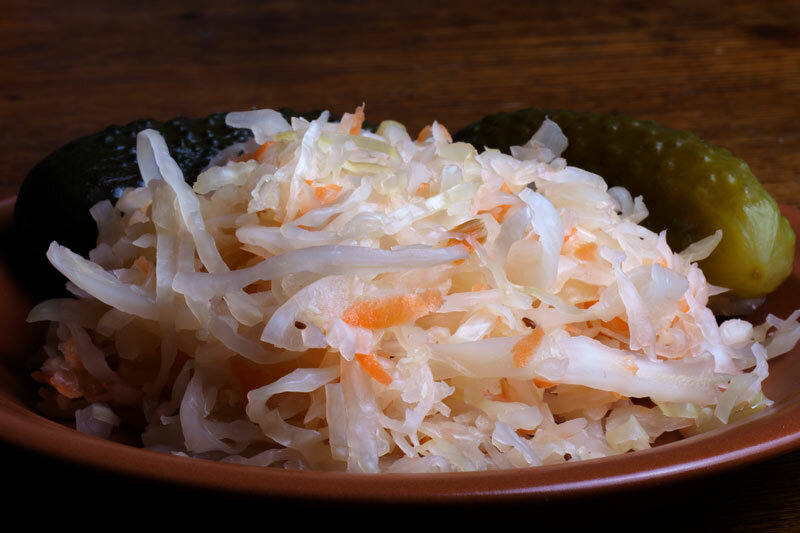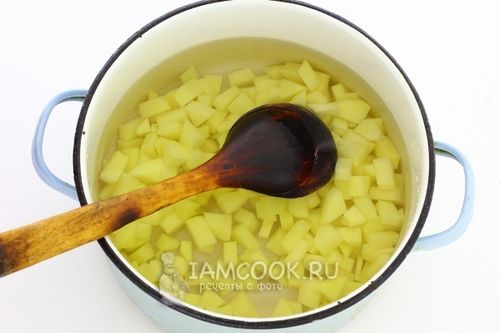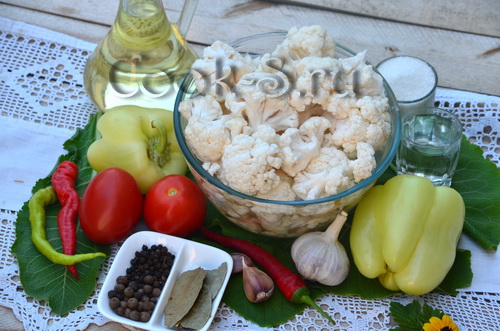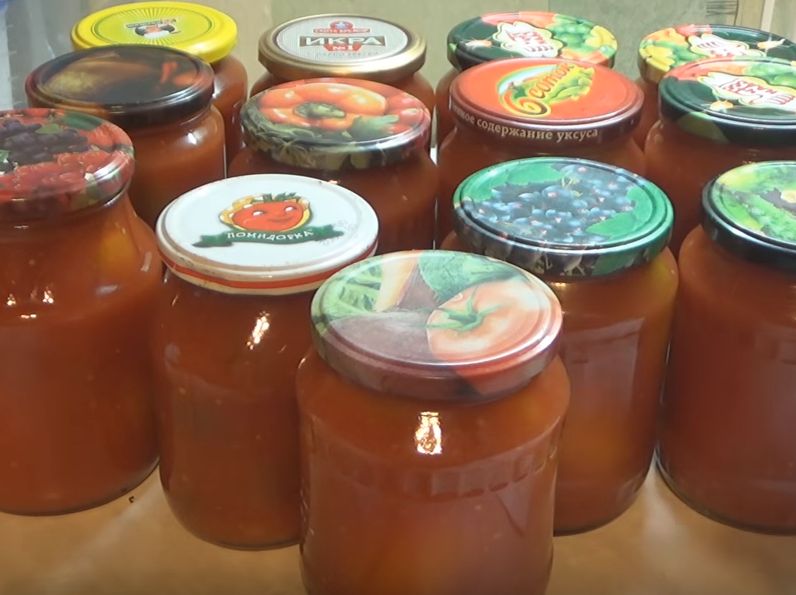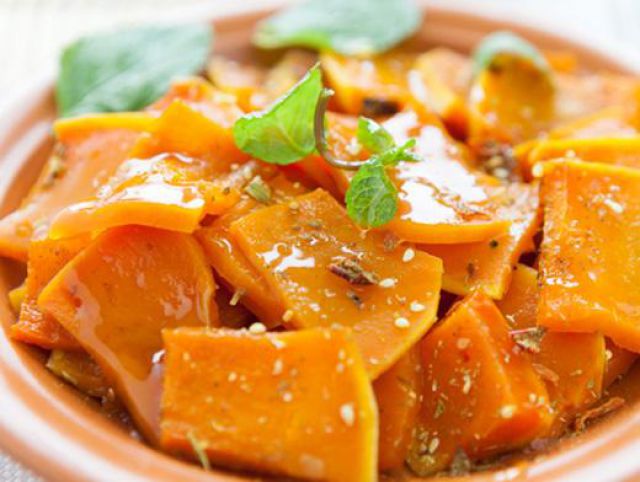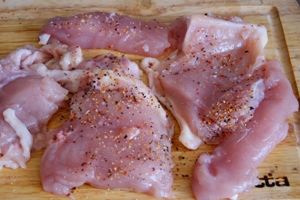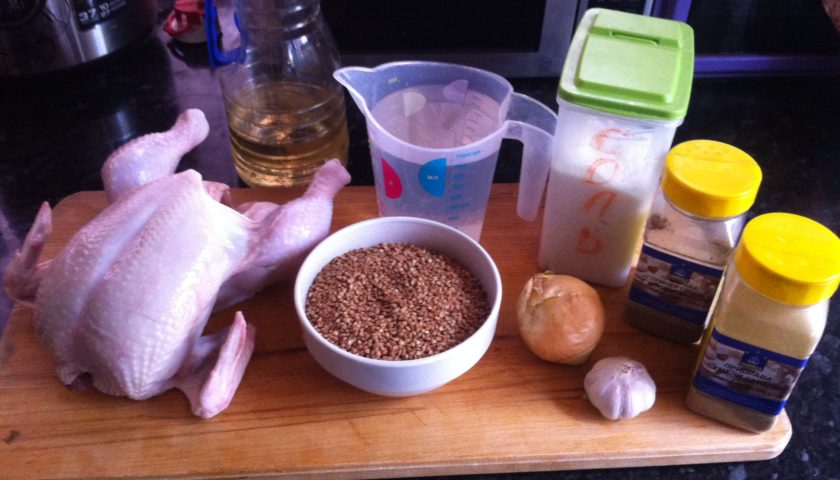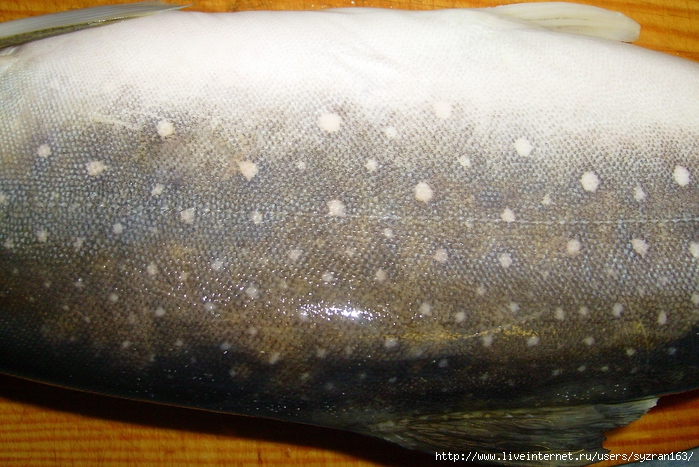How many grams of butter in a large spoon. How much does the product weigh? How much salt in a teaspoon
To accurately determine how many grams per tablespoon of bulk, solid, or liquid food ingredients, you should have on hand a special table that lists the weight values of the most popular products, most often used in cooking.
For the preparation of delicious and healthy dishes is required not only to use quality products, but also to accurately observe the ratio of ingredients. But not every home kitchen has special scales. It is faster and easier to use ordinary measuring utensils, such as a tablespoon, as measuring dishes.


All recipes that are printed in cookbooks or on websites dedicated to cooking, contain information on the weight ratio of the ingredients used. Different foods can be quickly measured with ordinary tablespoons or teaspoons, knowing how much of a food product a tableware holds.
Such a useful reminder should hang in the kitchen of each housewife, helping her quickly measure the exact amount of certain products. This will speed up the preparation of breakfasts, lunches and dinners and improve their taste. Knowing exactly how much a particular type of food weighs in a tablespoon, even a novice chef will never make a mistake in dosage.
Different products have different density and different occupancy, which affects their weight. A tablespoon has long been a universal measure for determining the weight volume, which in terms of measurement accuracy is not inferior to weights. All bulk ingredients are calculated based on the natural slides, which is typed during normal filling of the spoon.
Table of weight ratio for a tablespoon
| Product name | Weight with a hill in g | Weight without gorochki in g |
| Wheat flour | 30 | 20 |
| Sugar | 25 | 20 |
| Powdered sugar | 28 | 22 |
| Extra Salt | 28 | 22 |
| Rock salt | 30 | 25 |
| Baking soda | 28 | 22 |
| Dry yeast | 11 | 8 |
| Cocoa | 25 | 20 |
| Ground coffee | 20 | 15 |
| Cinnamon powder | 20 | 15 |
| Crystalline citric acid | 16 | 12 |
| Pic | 18 | 15 |
| Honey | 30 | 25 |
| Granulated gelatin | 15 | 10 |
| Water | 13 | — |
| Table Vinegar | 13 | — |
| Whole milk | 13 | — |
| Vegetable oil | 12 | — |
| Melted Margarine | 12 | — |
Based on this measure of the volume of different products, you can quickly weigh the right amount of ingredients for preparing a recipe dish. Precise observance of proportions always positively affects the taste and nutritional qualities of any dish.
How many grams in one tablespoon
Not only young, but also experienced housewives will help weigh a tablespoon. How many grams or ml fit into it does not depend on the volume of a tablespoon, which, even with its different forms, remains the same, but on the type of bulk or liquid products.
They can have different granularity and density, which affects their “placement” in a tablespoon. Some components of dishes, such as wheat flour or powdered sugar, have a very fine grinding, so they fit more in a spoon. However, the density of such products is not very high, so they will have a small weight in such a measuring device.
Liquid products also have different density and viscosity, which affects their weight when using the cutlery as a meter. The hostess just needs to know about it and take with her a pivot table with the use of a tablespoon as a measure of weight for different food ingredients, including the most popular products or those that are often used to make homemade lunches and dinners.
Without flour, it is impossible to make pastries, which require a large amount of this bulk product. In this case, as a measuring container, you can use a special measuring cup or cup.

A table spoon will help measure a small amount of flour when you need to cook:
- sauce;
- breading for meatballs or cheesecakes;
- cream soup;
- custard or other dish, which is added to thicken the flour.
For quick preparation of such dishes and obtaining the desired degree of viscosity, it is required to know exactly how many grams in a spoon fit without a large slide. The volume of flour or potato starch in a tablespoon will be 25-30 g. Using such a dispenser available in each kitchen will help you accurately and quickly measure the flour in the right quantity.
Manka
Useful and tasty semolina can be cooked properly only if you keep the exact ratio of milk and semolina. If the liquid can be measured using a glass, then it is not always possible to determine the amount of semolina accurately. Munk swells greatly in hot milk, and if there is an error in the ratio of products, the porridge turns out to be too thick and not tasty.
If you know how much gr in a tablespoon contains semolina, you can always cook a delicious and satisfying breakfast. It is enough to remember that in one tablespoon of semolina it fits 20-25 g.

If weight butter is used, then cooking with its use will be greatly simplified if you know that 20 g is contained in a tablespoon in solid form and 17. in melted butter. Knowing how many grams of butter in a table spoon, you can quickly calculate it weight for a particular dish.
Sunflower oil
When weighing vegetable oil in such a way, it should be remembered that it should be without sediment, otherwise its weight will increase, and the ratio of ingredients will be disturbed. It should also be remembered that when cooled, its weight decreases, therefore such a product should be weighed only when it reaches room temperature.
If ml are indicated in the recipe, it is possible to calculate by calculating the ratio of the number of spoons to a faceted glass. In a tablespoon placed 12 g of oily product.
Sugar

This product is used as often as salt. Sugar is put in baking, and also added in small amounts to add spice to and emphasize the brightness of the taste sensations in different dishes:
- salads;
- refueling;
- fillings;
- pickles and preparations;
- second courses;
- fruit drinks and other drinks.
Always remember how many grams of sugar in a tablespoon will help a table from a cookbook or thematic Internet resources. It should be remembered that sugar absorbs water well and increases its density, which leads to a decrease in its volume with the same weight.
Salt
Almost all the dishes in the cooking process have to salt. The exact ratio of salt to the volume of the dish will allow you to create a bright flavor range, avoiding nedosola and salting food. When weighing such a product should be aware that it has a heavy proportion.
In one tablespoon in a dry form it holds 25-30 g. The weight of salt may differ depending on the grinding, which is of the 1st or 2nd type. If the spoon scoops it up with a big slide, then the weight of salt then reaches 30-35 g.
Honey
Unlike other viscous products, honey is heavy. In a tablespoon, its weight is 40 g. In order to accurately determine the weight, the candied honey should be melted in a water bath. This will simplify the calculation of the amount of its weight in the preparation of confectionery and other dishes that require its use.
Honey is one of the few products that is always measured only with spoons, because when weighed on the scales, it remains on the walls of the dishes, which is placed on the weighing platform.
Vinegar
Vinegar is put in sauces and salad dressings, in the preparation of marinades and canned vegetables, as well as to extinguish the soda in the preparation of the dough. In one tablespoon it holds 10 g. When measuring, pay attention to the concentration of this product, which can be from 6 to 9%.
Other products
Measuring the weight of ingredients in cooking using a tablespoon will allow beginner and experienced housewives to create not only tasty, but also healthy dishes. You can measure other products with this cutlery, knowing that it comes with a slide:
- cocoa - 30 g;
- gelatin granules - 15 g;
- water - 12 g;
- rice - 17 g;
- dried yeast - 11 g;
- medium-ground coffee - 20 g;
- cow's milk - 13 g;
- powdered cinnamon - 20 g;
- ground nuts - 12 g;
- dry herbs, tea - 6 g;
- raw herbs - 10 g.
Housewives can make their own table of the volume of different food ingredients, using the ratio of glasses and spoons, writing how much the latter fits in the glass. Knowing the volume of large glass containers and the number of spoons in it, it is possible to accurately calculate the ratio of certain food components of a particular recipe.
The secrets of weighing products without weights
It will be easier to prepare tasty food without using kitchen scales, knowing the average weight of a number of products. The indicators are as follows:
- small chicken egg - 50-55 g;
- yolk - 15 g;
- protein - 35 g;
- regular Chicken Egg - 55-65 g;
- a big egg - 65-70 g;
- average potato tuber - 150-200 g;
- medium onion - 150 g;
- small garlic clove - 5 g.
All this useful information can be beautifully decorated and hung in your kitchen for ease of use in the process of cooking.
Conclusion
When using cutlery to calculate the weight of the ingredients listed in the recipe, it should be borne in mind that the volume of glasses and spoons may vary slightly depending on their shape and size, so they can fit different quantities of products. If you need to do accurate calculations, you can purchase culinary measuring cups and scales in specialized stores.
Every person at least once in his life, but was a cook, that is, the situation in the kitchen evolved when the choice and taste of the food being prepared depended on it. Previously, cookbooks were good helpers, now the Internet. But the puzzling questions have always been and will be. For example, how many grams of vegetable oil in a tablespoon? Let's try to figure it out.
A tablespoon - what kind of measure is that?
Cooking is a responsible, multi-level, in a word, complicated process, especially if the amateur in the culinary world is engaged in this business. Often in recipes of dishes and various diets the amount of the necessary ingredient, for example, vegetable oil, is indicated in grams or milliliters from the known to us from the school bench and the lessons of physics of the International System of Units. However, even advanced cooks do not always have special measuring scales on hand, what can we say about an ordinary person.
At first glance, this is a problem, the solution of which determines the correctness and taste of the prepared dish, and as a result, the expected effect rests on these grams and milliliters. You should not get upset, and there is practically no time for it, since the process of cooking is often quite regulated. A wand in such a difficult situation would be an ordinary tablespoon.
Of course, the objectivity of the data in the case of transferring the number of grams in spoons will suffer, since the high error will do its job. Different forms of spoons, despite approximately the same size, will not allow them to fill the same. In this regard, the balance of incompletely drained oil in the case of measuring the amount in excess of one spoon, will add inaccuracies.
That is why, if it is necessary to calculate a very accurate value, it is best to use measuring containers or scales. But with all its flaws, this method is still considered quite effective and simple. How many grams of vegetable oil in a tablespoon can be seen in the table below.
How to measure the right amount of vegetable oil, if there are no scales?

In a situation where you need to take the exact amount of oil, but there is no scale, the measured containers on hand, up to a tablespoon, will help. Just look at the label of the bottle with oil. There we will see the following information:
- information about the volume of the product - 1 l;
- net weight - 920 g;
- 100 g calorie - 899 Kcal.
To calculate the specified amount of the fat component of this will be enough. Knowing how much vegetable oil there is in 1 tablespoon will allow us, using simple arithmetic calculations, to determine how many spoons will be needed to achieve the value given in the recipe. But experienced kitchen servants are advised to use measuring spoons or cups. In these vessels the filling line is clearly visible, and the concepts of “with a slide” or “without a slide” will be unacceptable, which will add accuracy to measurements. And this, of course, will affect the quality of the prepared product in a positive direction.
Determine the calorie content of the product

People who monitor their weight can likewise determine how many calories a tablespoon of vegetable oil will give to the body, using information provided by the manufacturer on the packaging label and mathematical calculations known to each student. Although the quality of measurements and there will make their own adjustments. A little underfilling or overflowing may ultimately blur the final picture of the consumption of the planned number of calories per day.
You can count the calories yourself or look at the label above. Probably, it is nevertheless more convenient, and even more accurate, if you measure the required amount of oil into the container in accordance with the estimated conditions of calorie consumption and use it without fear during the day. Knowledge of the number of milliliters in a tablespoon of vegetable oil can also help. This is also the information in the table above.
Probably, chefs and housewives with great experience intuitively feel how much vegetable oil should be poured, without resorting to different tables and measuring vessels, in order to obtain, as a result, the proper taste or composition of a cooked dish that does not exceed the required number of kilocalories. And for culinary amateurs, whose kitchen is not yet equipped with scales, the use of spoons of all kinds, glasses and glasses for measuring products is just a salvation.
How many grams in a tablespoon and how many ml in a teaspoon are frequently asked questions when cooking at home, we suggest using a convenient table of measures and weights.
Everyone knows that the number of grams of flour, salt and sugar in 1 tablespoon is different. At home, without having a kitchen scale, it is customary to measure the weight of the product in ml in tablespoons, teaspoons and glasses to determine how many grams flour, sugar, salt and liquid products weigh.
However, to do this, you need to know how many grams are contained in a tablespoon, a teaspoon, and how many spoons with or without a slide fit into a glass in ml
Authors of recipes in most cases indicate in the recipes the number of products in ml or grams. Therefore, in order not to over-salt or overdock a dish, it is more convenient and faster to convert grams into spoons or ml in glasses.
Advice from the Wonderful Cook. There is no point in remembering a long list of the table of measures and weights; you need the table to lie in the kitchen, close to the desktop.
Using the table, it is easy to convert the capacity of a spoon and cup to grams, measure the weight of the product, without weighing the flour, sugar or salt on the scales.
When weighing bulk products and liquids, be sure to pay attention to the volume of glasses, as they differ in the number of grams.
How many grams in a tablespoon of sugar
The generally accepted values of the content of products in a table or a teaspoon - a spoon with a low hill. In rare cases, a spoon without a slide is used as a measure of weight. However, in this case, the author of the recipe necessarily makes the necessary clarification in the ingredients.
The first value in the table indicates the capacity of a tablespoon according to generally accepted standards - with a small slide, a tablespoon means the standard size.
The second indicator in the table is the weight of a tablespoon without a slide.

How many grams in a teaspoon of salt

How many grams in a glass of flour
As a rule, two types of glasses are used in recipes: faceted and thin-walled. Therefore, due to the difference in volume, the capacity of each glass is different. Thin-walled glass holds about 50 grams of products more than faceted. The content of glasses is measured similarly to spoons, that is, with a small slide. The first value indicated in the table is the capacity of a thin-walled glass, the second indicator is a cut glass.

How many grams in a product
- 1 small egg - 50-55 g
- 1 yolk - 15 g.
- 1 protein - 35 g
- 1 medium egg - 55-65 g
- 1 large egg - 65-70 g.
- 1 potato -150-200 g
- 1 onion -150 g
- 1 clove of garlic - 5 g
It is worth noting that the above measurements are relative. In different table sets the volume of the glass, the length of the table and teaspoons may vary.
If you need a more accurate weight of products, then we recommend using measuring cups or electronic, kitchen scales.
In addition to the table, we also offer to watch a video on the topic.
How to measure flour, sugar, salt without scales
We hope the tables will be so useful that you will no longer have questions about how many grams are in a spoonful of this or that product.
| Product weight in grams (g, g). | The number of teaspoons V = 5 ml. / Number of tablespoons V = 15 ml. | Number of liters (l., Liter cans). | Number of cubic centimeters (cm3, cubic cm.). | The number of milliliters (ml). | The number of glasses 200 ml (faceted glass). V = 200 cm3 | The quantity of glasses is 250 ml (standard glass thin-walled). V = 250 cm3 |
| Amount of 50 grams (50 g, 50 g) of vegetable sunflower, olive, rapeseed oil (liquid fat from oilseeds: sunflower, olives, rapeseed) - this is how much | 9 tea / 3 dining rooms | 0.054 l | 54 cm3 | 54 ml | 1/4 cup | 1/5 cup |
The first way to measure 50 grams of sunflower oil without weighing on the scales is to measure the product with a spoon. Spoons, teaspoons or table, are convenient because they are always at hand. It is difficult to imagine the kitchen, where we would not find this popular "household measuring device", known to any homemaker. Specially trained to use the tablespoons and teaspoons, I think, no one needs. Although it is worth explaining that all ways to measure a product with a tablespoon or a teaspoon are always based on the fact that the portion is measured correctly only when we observe one important measurement rule. Which one Spoon the product must be carefully, without a slide. That same slide, which is so easily obtained when measuring the product, is not at all a trifle and cannot be neglected. It introduces a significant error in any calculations of the amount of the product, overestimating (increasing) its weight in grams, compared to what you expect when measuring yourself at home. It is especially important to observe this rule when measuring portions of loose, granular, granular, lumpy foods and ready meals. In those cases when we want to measure 50 grams (50 grams, 50 grams) of liquid, the problem is solved by itself. Since the liquids in teaspoons and tablespoons do not create a big slide. And the volume of the measured product will almost coincide with the capacity in milliliters declared by the manufacturer of the spoon. The following volumes of a tablespoon and a teaspoon are chosen for our table:
- The volume of a teaspoon of vegetable oil is 5 milliliters (ml), which is 5 centimeters cubic (cm3, cubic cm.).
- The volume of a tablespoon of vegetable oil is 15 milliliters (ml), which is 15 centimeters cubic (cm3, cubic cm.).
The idea of a method of measuring the weight (mass) of vegetable oil equal to 50 grams using a tablespoon or a teaspoon is that there is a proportional relationship between the weight of fat from oilseeds and its volume. Physically determined bulk density of the product. By itself, the bulk density, by definition, of this physical quantity, is the weight of some volume taken per unit. Typically, the bulk density, within the framework of what may be relevant to cooking and measuring portions at home, is the weight of one milliliter (ml). Or, how many grams is in 1 milliliter (ml) of vegetable vegetable oil. Knowing how many grams weighs 1 ml, we can say for sure how much one teaspoon will weigh and how many grams 1 tablespoon of liquid sunflower or olive fat will weigh. After all, their capacity (volume) is well known to us in advance and we can consider spoons (with some stretch of course) standard dishes. What makes it possible for us to use spoons for measuring the portion of vegetable oil of vegetable content by weight in grams, without weighing on the scales.
How to measure 50 grams (50 grams, 50 grams) of vegetable oil is how many glasses per 250 ml (standard thin-walled) and how many glasses per 200 ml (faceted).The second way to measure 50 grams of fat from oilseeds without weighing on the scales is to measure the product with a glass. In addition to spoons, in the kitchen we always have another fairly convenient "household measuring instrument" - these are glasses, glasses, wine glasses, mugs and cups: dishes for drinking. With circles, cups (ceramic and glass) a separate conversation, too many varieties of cups with different designs, size and, as a result, different capacity can be found in the store. I would not recommend to consider glasses, wine glasses, cups as standard utensils. Except when you already know their capacity in advance. But glasses are really standard glassware, quite suitable for measuring 50 grams of fat from sunflower, rapeseed, olives, and olives. With the clarification that there are two standards of glasses according to their capacity in milliliters. These two types of glass cups differ in design. We can always visually determine at a glance which option we have in the kitchen: a glass thin-walled (thin) glass or a glass faceted glass. In those rare situations where you are not sure, in doubt, it is easy to clarify the type of glass. How to do it? Here, it will be more convenient and faster to use the Internet. "Scoring" in the search for Yandex or Google requests: faceted glass photo or ordinary glass photo. In the image in the photo, you will see the difference between the characteristic design of a faceted glass and the appearance of an ordinary standard glass. As for their capacity, the number of milliliters (ml) of vegetable vegetable oil, placed in different glasses, here there are (and are strictly observed by manufacturers) the following proportions:
- The volume of an ordinary glass cup of sunflower vegetable oil is 250 milliliters (ml), which is 250 centimeters cubic (cm3, cubic cm.).
- The volume of a faceted glass cup of sunflower vegetable oil is 200 milliliters (ml), which is 200 centimeters cubic (cm3, cubic cm.).
The idea of a method of independent measurement of the weight (mass) of vegetable oil equal to 50 grams with the help of a glass is that there is a proportional relationship between the weight of liquid fat from sunflower and its volume. As in the case of spoons, determined from a physical point of view, the specific weight of the product. By itself, the specific gravity, by definition, of this physical quantity, is the mass of some volume taken per unit. Typically, the bulk density, within the framework of what may be relevant to cooking and measuring portions at home, is the weight of one milliliter (ml). Or, how many grams is in 1 milliliter (ml) of vegetable vegetable oil. Knowing how many grams weighs 1 ml, we can say for sure how much one standard glass will weigh and how many 1 faceted glass of fat from olives, rape, sunflower will weigh in grams. After all, their capacity (volume) is well known to us in advance and we can consider glasses as standard dishes. What makes it possible for us to use glasses for self-measuring portion by weight in grams, without weighing on the scales.
How to calculate: 50 grams (50 grams, 50 grams) of vegetable oil is how many liters (l), how many milliliters (ml) and how many liter cans (proportion to half-liter jars).If we want to know how many liters is it - 50 grams of vegetable oilthen the table on this page will help us. Naturally, there is no direct relationship or generally accepted "school" rules for converting grams to liters. Grams (g, g) are units of measure for weight or mass, and liters (l) are units of measure for volume. Automatically, without taking into account the features and properties of a particular product, it is impossible to recalculate grams per liters. However, if you approach the matter with the mind, think, then nothing is impossible. From a physical point of view, we again refer to the density of liquid fat. So, the weight of a serving that we know is 50 grams. In liters, we measure volume. Good. The easiest way to put everything together: grams, liters and density is bulk density. By definition, bulk density is the density or specific gravity of a unit volume. For example, one liter (l). The bulk density of vegetable oil is available reference information and knowing how many grams weighs 1 liter, we can easily calculate how many liters in 50 grams of sunflower oil. In principle, I have no doubt that you can make the calculation yourself, but it will be more convenient to look at the finished answer in the table.
- The volume of a liter jar of sunflower vegetable oil is 1 liter (1 l) or 1000 milliliters (ml), which is 1000 centimeters cubic (cm3, cubic cm.).
- The volume of a half-liter can of sunflower vegetable oil is 0.5 liters (0.5 liters, half liters) or 500 milliliters (ml), which is 500 centimeters cubic (cm3, cubic cm.).
If we want to know how many cubic centimeters (cm3) - 50 grams of vegetable oil, then you can immediately look at the answer in our table. As I noted, many people know that grams can be converted into liters (l) and milliliters (ml). But if it is necessary to recalculate grams per cubic centimeters (cm3, cube cm), then the people often “freeze” in a small bewilderment. Although, figuratively speaking, this is the same “Easter egg”, only “side view”. There is nothing problematic in cubic centimeters - these are also units of measure for the volume of a product. Simply, we are not accustomed to operating with cubic centimeters in cooking and in the kitchen. Purely psychological moment. In order to confidently make an independent recalculation and find out how many in 50 grams of vegetable oil there will be cubic centimeters. With a certain density of the product (volume weight), it suffices to recall the proportions we know from school:
- 1 cubic centimeter (1 cm3, 1 cubic cm.) Of vegetable oil is 1 milliliter (ml).
- 1 liter (1 l) of vegetable oil is equal to 1000 cubic centimeters (cm3, cubic cm.).
- 1 cubic meter (1 m3, 1 cubic meter, 1 cubic meter) of vegetable oil is equal to 1000 cubic centimeters (cm3, cubic cm.).
You can ask questions, leave feedback, comments, comments and suggestions for the article: 50 grams, 50 grams, 50 grams of vegetable oil - this is how much.
- how many teaspoons.
- how many tablespoons.
- how many glasses 200 ml (faceted glass).
- how many glasses 250 ml (standard thin-walled, thin glass).
- how many liters (l., liter cans).
- how many milliliters (ml).
- how many centimeters cubic (cm3, see cubic).


